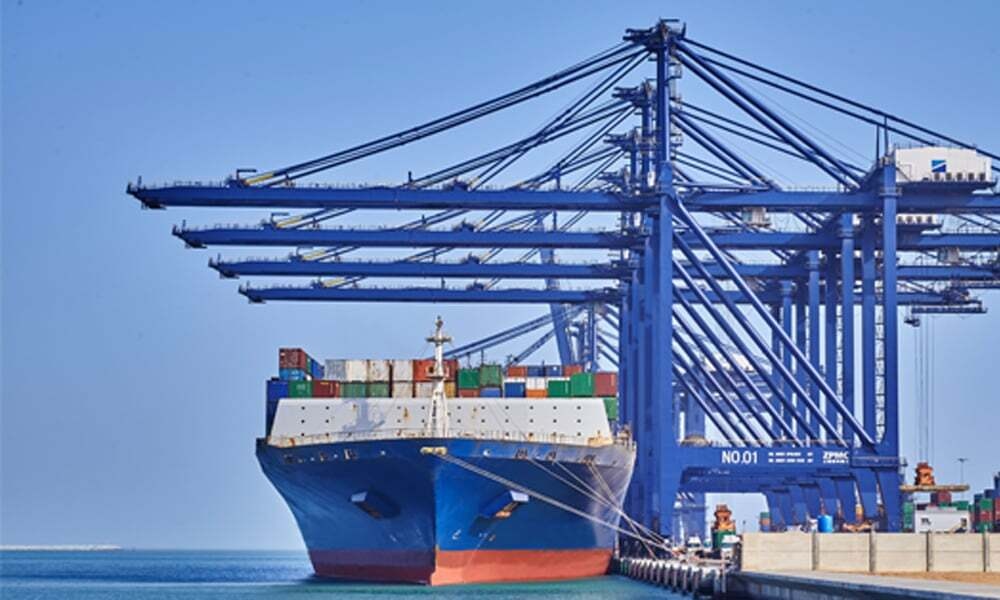Gold prices have been experiencing a decline, causing concern among investors who traditionally view the precious metal as a safe haven during economic uncertainty. As the market adjusts […]
CVS Health Reports Q3 2024 Earnings Amid Higher Medical Cost
CVS Health has released its third-quarter 2024 earnings report, revealing mixed results as the company grapples with higher medical costs. The company reported total revenues of $95.4 billion, […]
U.S. Trade Deficit Hits 30-Month High Amid Import Surge
The U.S. trade deficit has widened to a 30-month high in September, driven by a significant surge in imports as businesses rushed to stock up before a planned strike at American ports1. The trade gap increased by 19.2% to reach $84.4 billion, up from $70.8 billion in August2. This rise in imports was primarily due to businesses importing consumer electronics and other goods ahead of the holiday shopping season2. Despite the strike being called off after just three days, the surge in imports had already impacted the economy2. The trade deficit shaved 0.6 percentage points off the U.S. GDP growth rate for the third quarter, which was recorded at 2.8% compared to 3.0% in the second quarter2. Imports rose by 3.0% to a record $352.3 billion, while exports fell by 1.2% to $267.9 billion2. Analysts believe that the trade deficit is likely to narrow in the coming months, but the current high levels indicate strong consumer spending power2. The trade gap with China also widened during this period, reflecting increased imports from China ahead of potential changes in trade policies3. For more details, you can read the full article on MarketWatch.
Oil Markets Experience Volatility Amid Geopolitical Tensions
Summary: Oil markets have been highly volatile recently, with prices fluctuating due to geopolitical tensions, particularly between Israel and Iran, and concerns over global demand. Expanded Version: Background: The past week has been particularly tumultuous for oil markets, with prices experiencing significant fluctuations. The volatility has been driven by a combination of geopolitical tensions and concerns over global demand. Geopolitical Tensions: Recent reports of an Iranian retaliation to Israel’s latest strike have pushed oil prices higher1. The markets are now anticipating an Iranian attack on Israel using drones from Iraqi territory, which has reintroduced a geopolitical risk premium1. This has caused Brent crude futures to rise to around $74-75 per barrel1. Demand Concerns: Despite the rise in prices due to geopolitical risks, concerns over global demand are capping any significant gains1. The Organization of the Petroleum Exporting Countries and its allies (OPEC+) have admitted the possibility of rolling over its production cuts into 2025, citing concerns about soft oil demand, particularly from China1. Market Reactions: The UK government’s decision to increase its windfall tax on oil and gas production in the North Sea from 35% to 38% has also impacted market sentiment1. Additionally, new sanctions imposed by the US on Russia’s Arctic LNG 2 project have added to the market’s uncertainty1. Future Outlook: The long-term outlook for oil markets remains uncertain, with traders closely watching developments in the Middle East and OPEC+ decisions on production levels1. The upcoming US presidential election and the Federal Reserve’s policy meeting are also expected to influence market dynamics1. Source: For more detailed information, you can read the full article here.
UK Borrowing Costs Surge Amid Labour’s Budget Moves
Summary: UK borrowing costs have surged following the Labour government’s recent budget announcement, which included significant tax hikes and increased borrowing1. Despite initial market concerns, economists believe this situation differs from the 2022 “mini-budget” crisis2. Expanded Version: Background: The UK’s borrowing costs have seen a sharp increase after the Labour government unveiled a comprehensive budget featuring substantial tax hikes and increased borrowing1. This move has raised concerns among investors, reminiscent of the 2022 “mini-budget” crisis when bond yields soared rapidly, threatening to destabilize pension funds2. Current Situation: The 10-year gilt yield, representing medium-term borrowing costs, has risen to over 4.4%, while the 2-year gilt yield has climbed to 4.414%2. These increases reflect investor apprehension about the fiscal policies and their potential impact on inflation and economic stability2. Economic Impact: Economists have noted that while the surge in borrowing costs is significant, it is not as severe as the 2022 crisis2. The Labour government’s budget includes around £40 billion in tax hikes and a substantial increase in short-term borrowing, aimed at balancing day-to-day spending while investing in public services and infrastructure2. Expert Opinions: Financial analysts have mixed views on the situation2. Some believe the fiscal expansion could lead to slightly higher inflation and a slower pace of interest rate cuts by the Bank of England2. Others argue that the Bank of England will maintain its current monetary policy stance given the cooling inflation rates2. Future Outlook: The long-term impact of these budget measures remains uncertain2. While the immediate response from the markets has been cautious, the overall economic outlook will depend on how effectively the government manages its fiscal policies and addresses investor concerns. Source: For more detailed information, you can read the full article here.
China’s Factory Surge Amid Stimulus Efforts
SChina’s Factory Revival Amid Stimulus Measures Recent data shows an unexpected expansion in China’s factory activity, driven by government stimulus measures. This growth indicates a significant turnaround and highlights the success of these economic interventions. Summary and Expanded Version: China’s manufacturing sector has shown an unexpected surge in activity, a development largely attributed to government stimulus efforts. This stimulus, designed to counter economic slowdown, has provided significant support to various industries, leading to a marked increase in factory output. Background on Stimulus Efforts The Chinese government’s stimulus package includes a range of measures such as tax incentives, financial aid, and infrastructure investments. These efforts are aimed at revitalizing key sectors and encouraging production growth. Impact on Manufacturing The rise in factory activity is reflected in the Purchasing Managers’ Index (PMI), which indicates not only recovery but a period of expansion. This growth can be seen in increased production volumes, a boost in employment rates within the manufacturing sector, and a rise in export activities. Sector-Specific Developments High-tech manufacturing and green technologies have particularly benefitted from the stimulus measures, aligning with China’s strategic goals for innovation and sustainability. Traditional manufacturing sectors like steel and textiles have also seen improvements, though to a lesser extent. Global Economic Implications China’s manufacturing resurgence has far-reaching implications for the global economy. As a critical player in international supply chains, the uptick in Chinese production can help stabilize global trade. This development is especially important for countries that rely on Chinese goods and materials. Expert Insights and Analysis Economists and industry experts have weighed in on the significance of China’s manufacturing revival. While many praise the stimulus measures for their immediate impact, some express concerns about long-term sustainability and potential debt issues. Future Outlook Sustaining this positive momentum will require ongoing support and adaptability to global economic changes. The focus will likely remain on advancing manufacturing processes, integrating more technology and AI, and continuously monitoring economic indicators to fine-tune policies. For detailed information, you can read the full article here.





